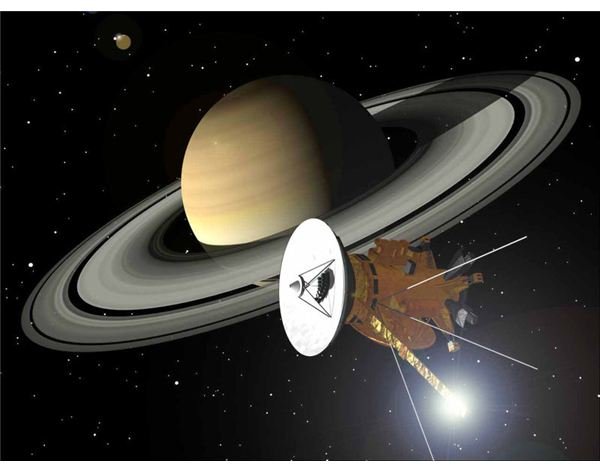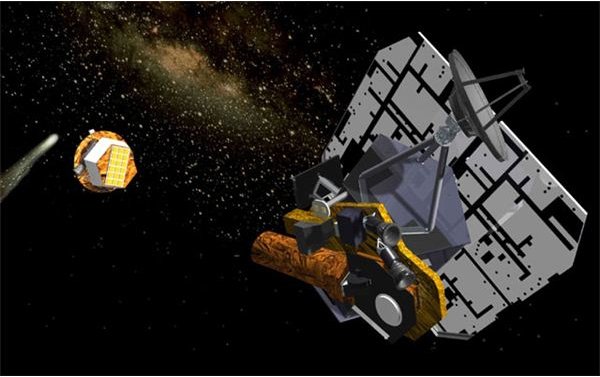Current Planetary Missions: Missions To Other Planets
The Current NASA Missions
Right now the National Aeronautic and Space Agency (NASA) and cooperative space agencies around the world are working on several missions to the inner and outer solar system. These flights include orbiters, landers and flybys that will provide a lot of new information which will prepare us for manned flight to these far away places. As the shuttle program comes to an end, all eyes are on the newer missions, the most anticipated of which are to Mars.
Missions To The Inner Solar System (Mercury, Venus, Mars)
The current Mars mission called ExoMars Trace Gas Orbiter is planned for 2016 in a joint venture between NASA and the European Space Agency. The mission will examine the Mars atmosphere, planetary temperatures, and perform extensive mapping. In June of 2010, these organizations selected instruments to be used on the ExoMars probe.
Missions like these are the new goals of NASA as the shuttle program comes to an end. Going back to the Moon, and establishing a base on the Moon, as well as visiting Mars are the next big things on NASA’s plate.
There are several experiments designed to help humans cope with the long mission being performed. The most notable of which is an experiment where several test volunteers are locked in isolation together for 1 year. But there are other less known experiments that are just as critical. An example would be attempting to grow vegetables in Moon or Mars regolith. This is a less exciting, but highly relevant to colonization of the other terrestrial planets.
All of these experiments point toward Mars, but Mars offers much more than a quick trip. Mars is the closest planet to Earth in many ways. No other planet has been proven to have ice on it. We strongly suspect some of Jupiter’s satellites have water, but we have proven ice is on Mars. Mars has a much thinner atmosphere than Earth, but it may be possible to colonize Mars much quicker than any other planet. It doesn’t have scorching conditions like Venus and Mercury, or is an icy rock like Pluto or Haumea, a small dwarf planet in the Kuiper belt. Mars has low temperatures, but it theoretically could be colonized with the least effort.
The current mission to Mercury is the BepiColumbo mission planned to launch in 2014. The mission will put an orbiter around the planet to measure Mercury’s form, interior, geology and surface topology. It will provide the most comprehensive picture of Mercury to date. It will also test Einstein’s theory of relativity and search for asteroids close to the Sun. This is a joint project between ESA, NASA and the Japanese Space Agency.
The current mission to Venus by JAXA is the Akatsuki Mission, which is active right now. The orbiter is still in transit and won’t get to Venus until December of this year. It will be studying the Venusian weather, atmospheric conditions, vulcanism, temperatures and lightning. This is one of many missions to Venus, most of which were successful.
The next scheduled mission to the Moon is called Gravity Recovery And Interior Laboratory, or GRAIL. The mission will involve multiple spacecraft that will fly in tandem around the Moon measuring its gravity, and studying its core. This is all part of NASA’s Discovery program.
Missions To Outer Solar System (Jupiter, Saturn, Uranus, Neptune, Pluto, Haumea)

The current NASA mission to Jupiter is called Juno. It is scheduled to launch next year in August of 2011. The mission will comprise an orbiter to measure how much water is on Jupiter, study Jupiter’s gravity, and observe its atmosphere and weather. It will also study Jupiter’s magnetosphere.
Cassini is the current mission to Saturn, and it has been a great success so far. The probe is still functioning, and the mission has been extended until 2017, at which time it will be crashed into Saturn so as not to risk contaminating any of Saturn’s moons.
NASA currently has no plans to visit Uranus.
NASA is in flight to study Pluto with the New Horizons spacecraft. This craft will study Pluto and the Kuiper belt. It will study the composition of this icy world, and its atmospheric structure and interior. It is the first of its kind, a deep space mission solely for the purpose of visiting a single world so far from Earth. This particular mission is exciting because we often find oddities we can’t explain so far from Earth. A great example is the great dark spot found on Uranus that disappeared before Hubble could inspect it 5 years later. Who knows what wonders await NASA on Pluto?
Summary of Current Space Missions
It appears NASA is planning to support several different types of space missions to many worlds. Other space agencies like ESA, the Japanese Space agency and China’s space exploration organization will definitely play a role in the future exploration of the cosmos. We can only hope that space exploration will eventually become a successful and rewarding adventure for all mankind.
References:
NASA Status Reports:
https://nssdc.gsfc.nasa.gov/planetary/projects.html
Discovery Channel Assessment:
https://dsc.discovery.com/tv/nasa/how-space-works/nasa-missions.html
More NASA Status Reports:
